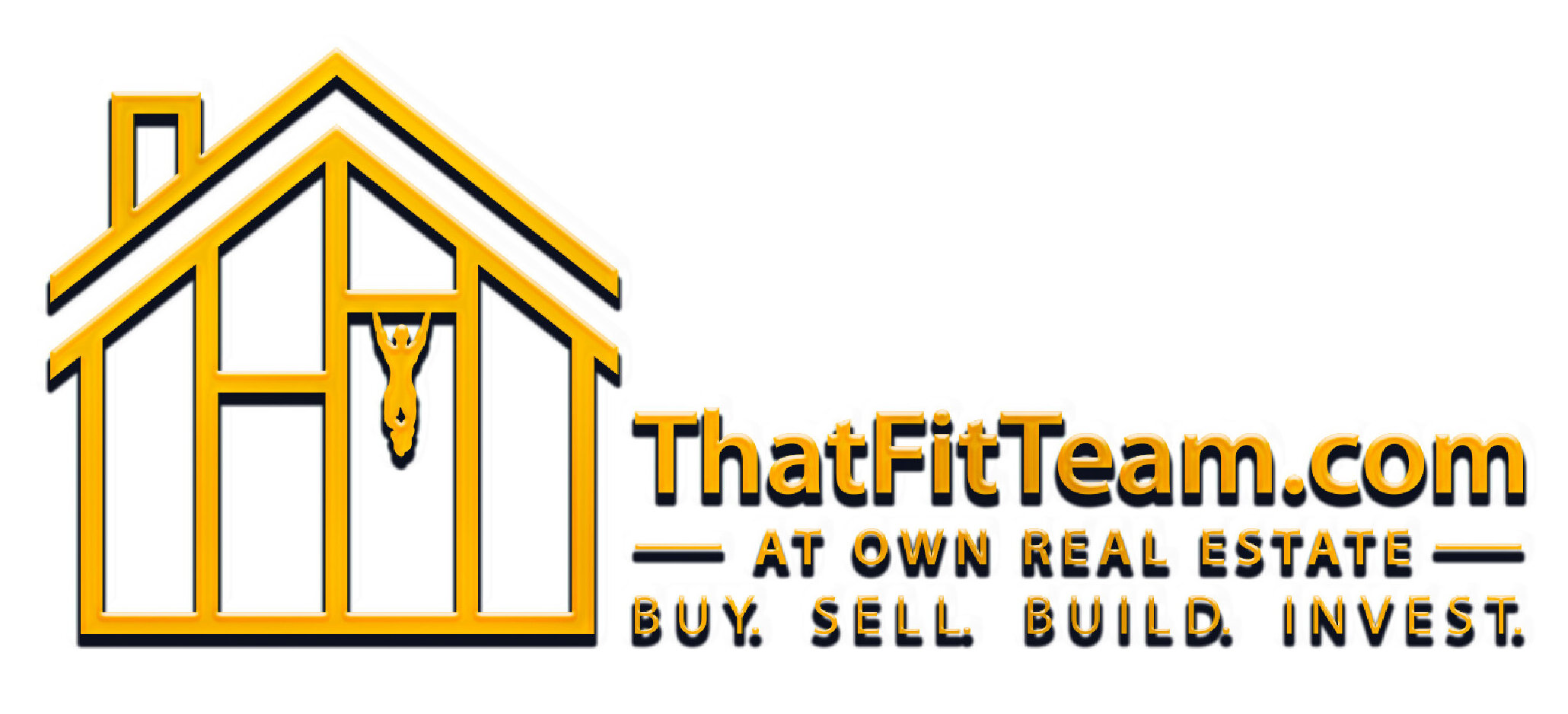What’s up, everybody? Welcome to your favorite investing channel. And I’m Jonathan Beasley. And today, by the end of this video, you will know the three golden rules of real estate investing. And it starts now. What’s up, guys? As you know, I’m super passionate about real estate investing because, frankly, it’s changed my life. It’s changed my children’s life. And by the time I’m done doing my damage and building this portfolio, it’s going to change our family and build legacy wealth for generations to come.
So any time I can share that, I want to that specifically, why are we creating this content. So any time I create something that you might find valuable or applicable to your own real estate journey, would you mind please hitting the Subscribe button and the Bell notification as well?
That way, every time that we make a new video and share new real estate strategies and tips, you will know about it. So let’s get to the good stuff. Real estate investing is one of the most effective ways that the average person like you or like I can achieve true wealth in our lifetimes banks will loan on it. It typically appreciates over time other people pay off your mortgage for you. So many good things about it, but to do it properly, you really need to know how to analyze a deal and crunch the numbers so that you can distinguish what’s a bad deal versus what’s a good deal.
Now, luckily for you and I, a few experienced real estate investors smarter than us have come up with some simple rules of thumb. And if we follow these, they can help us quickly run numbers on a deal and determine if we should take our due diligence a couple of steps further. So if the property passes one or more of these rules of thumb, then you know it’s time to maybe take your due diligence to the next step.
The Number One Rule When Investing
So the first rule we’re going to talk about is the 1% rule. So the 1% rule essentially states that in order for a rental property to have positive cash flow, the monthly rental income should be at least 1% of the cost of the acquisition. So to figure this out, you simply take the rental income and divide it by the value or the purchase price of the home. If the number is one or greater, then you have past the 1% rule. Now, obviously, rules of thumb are imperfect by nature. They’re not all encompassing, and they shouldn’t take the place of doing extreme due diligence and underwriting. It’s also true that not all homes necessarily make for an ideal rental property. So education is super key for you. There may be sections in your city where there’s just not a big demand for rentals, and so the value to rent ratio may be low in case the 1% rule wouldn’t apply. On the other hand, there may be sections in town where there’s a high demand for rent. So for instance, here’s a quick insider tip. Here in Hampton Roads, we have a ton of military bases and colleges around the area.
So properties in those areas often garner higher rent to value ratios than do other areas. I typically shoot to achieve a 1.5% rule. Now, it’s not always doable, and in this market, it’s very difficult to find these deals. But when the rent ratio starts to get that high, the deal starts jumping off and screaming at me off the page. And I get really really fired up. So as an example, the 1% rule, if you have a home that’s worth $200,000, you’d want to get at least $2,000 a month in rental income for that property. And believe it or not, in today’s market, it is actually getting more and more difficult, as I mentioned, to find a home on the MLS that meets the 1% rule.
But nonetheless, it’s a very helpful benchmark to judge a property against so if you’re out scouting deals, pull out your calculator to see which ones meet the 1% rule and then take your due diligence to the next phase because it’s at least past that litmus test. Now on to the golden rule of thumb.

The 40% Rule
Number two, this one’s called the 40% rule. The 40% rule states that approximately 40% of a rental properties income is going to go straight out the door into operating expenses. So operating expenses are basically all of the properties expenses other than the principal and interest on your mortgage loan. So this includes things like management fees, your real estate taxes, insurance, repair cost, capital expenditures, which sort of encompasses things like long term investments, improvements like roof, HVAC, new siding, those sorts of things.

So the proximal 40% of your income going straight out of your account and into expenses. This essentially means that you really only have about 60% of your monthly rental income to cover your principal and interest payment and to include any profit or any positive cash flow that you’re anticipating as a return on your investment. So going back to the $2,000 a month rental house hypothetical situation, that means about 80% on average is going to go right out the window to all of those operating expenses. Now let’s say you want to make at least $100 in cash flow, profit and net profit each and every month from that property. That would mean that your mortgage has to be 1100 dollars a month or less. And based on that number, you can then determine what your maximum purchase price for that particular rental property should be. That’s the goal of any sharp investor, is to reverse engineer how much you can pay for a property and be happy with your returns.
Now the 40% rule is just kind of a rough estimate. So if a property is looking good, you again defer to previous advice. I would encourage you to actually find out what the property taxes are. You can call some insurance agents and maybe get some insurance quotes. You could call a mortgage company to see what loan program would work, what your down payment might be, what the interest rate is, more specifically so that you know what your monthly outlay is actually going to be. Also, you might want to find out what major improvements have been done or might need to be done so that you can start to put together an estimate of what your maintenance costs and your capital expenditure costs are going to be down the road. So taking all of these due diligence steps into account will get you quickly on the way to figure out how close you are to the 40% rule as it relates to the operating expenses of your property.
What to Look for When Flipping
Now on to the third rule. The first two rules really focus specifically on a rental property, which is my area of global domination. But I’ve done some flipping in my day as well. And the third rule is actually a very effective rule if you’re looking to fix and flip or more traditionally called flipping houses. So the 75% rule states that you should pay 75% or less of what the actual after repair value or ARV of the subject property is going to be. So for example, if the home is going to sell for say $300,000 and 75% of $300,000 would be 225 and then your fixed up costs are 50,000. You take the 225 which is the 75% of ARV minus the 50,000. And what you’re going to pay for the property is $175,000 or less. There’s going to be expenses like closing costs to buy and closing costs to sell and you’re probably going have to pay buyers closing costs.
There’s going to be lenders fees, you’re going to have listing commissions to pay agents and brokers to market and sell the property. There are renovation costs, utilities, taxes, so there’s a ton of things that go into that 25%. And then you’re also going to want to turn a profit because there’s a lot of risk and a lot of hard work involved with flipping houses. So by lumping all of those expenses together, you really only need to figure out two main numbers in order to determine if a deal is going to make a good flip for you or not. The first one is the ARV or the after repair value. So what’s the property going to be worth once it’s fixed up and then the cost of the renovation?
So you could do this by getting a book. There’s software programs that can help you construct a renovation budget. You can connect with contractors that you could put together a scope of work, walk them through, and they could price out the cost. But the bottom line is if you can determine what the after repair value is, as well as the renovation costs, you can then effectively decide how much you can pay for that property to turn a profit. Now, just like with the other golden rules of thumb, the 75% rule isn’t perfect, and it kind of falls short when you get into basically two extremes. So, for example, if you’re dealing with like a luxury property, a $2 million property, the 75% rule gets a little wonky. And on the other end of the spectrum, if you’re dealing with like a 70,000 or an $80,000, like really low barrier to entry, like first time home buyer house again the 75% rule doesn’t really work out.

The average median sale price of a home in Hampton Roads right now is around $300-$305,000. So if you’re anywhere near that 300,000 I mean anywhere from like 250 to $600,000, the 75% rule is a pretty reliable indicator and litmus test for you so if it meets the 75% rule, again take that as a green light that you should crunch the numbers, take a little bit deeper of a dove into it and see if all of your holding costs and operating expenses and your desired profit can fit within inside that number. So there you have it. If you have any more questions or you have deal specific information that you’d like to hit us up for, you can comment below. You can get us on Facebook, you can get us on our website at thatfitteam.com. We absolutely want to encourage you in your real estate investing journey. So please also don’t forget to subscribe for more real estate advice and hit the little bell icon too.
So you’re notified every time we uploaded a video. I’m Jonathan Beasley with That Fit Team, we are professionals in real estate and passionate about people we’ll see you on the next video.

